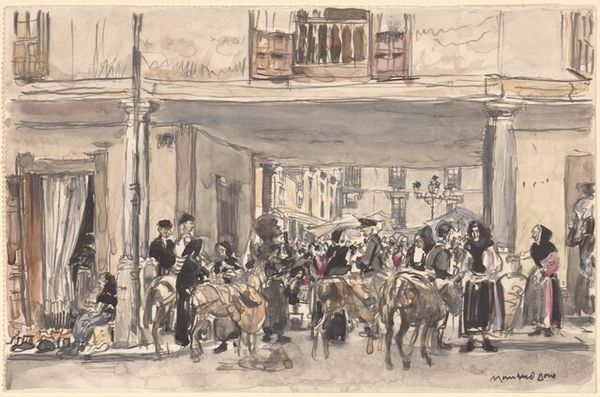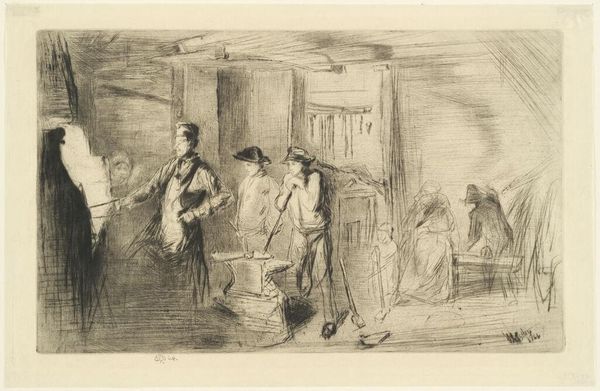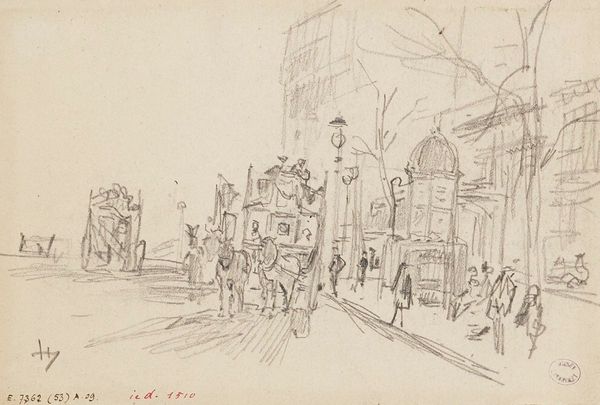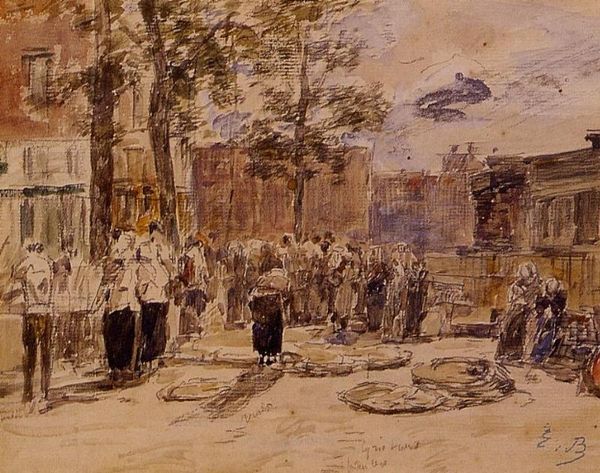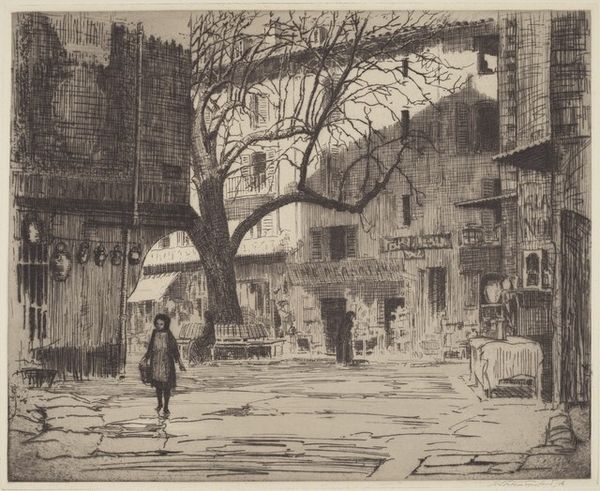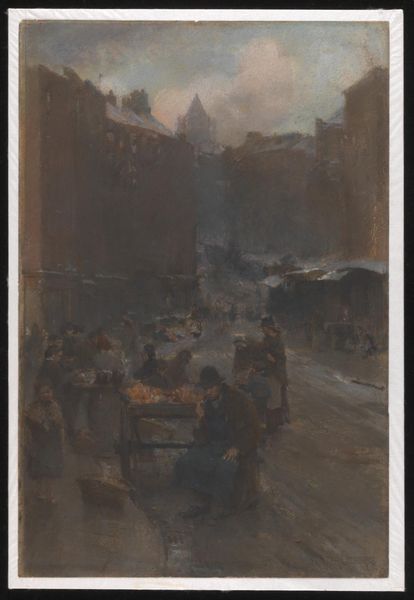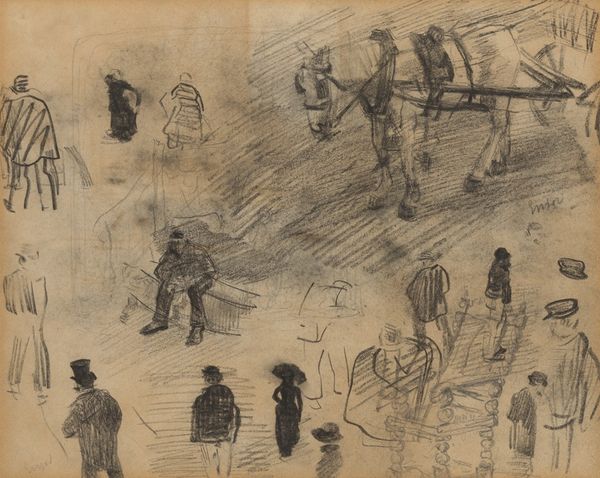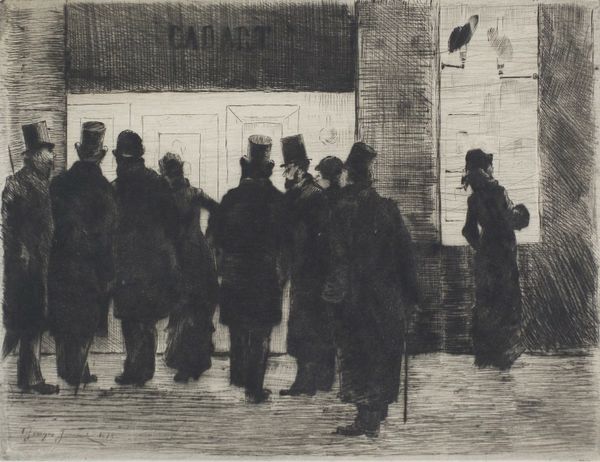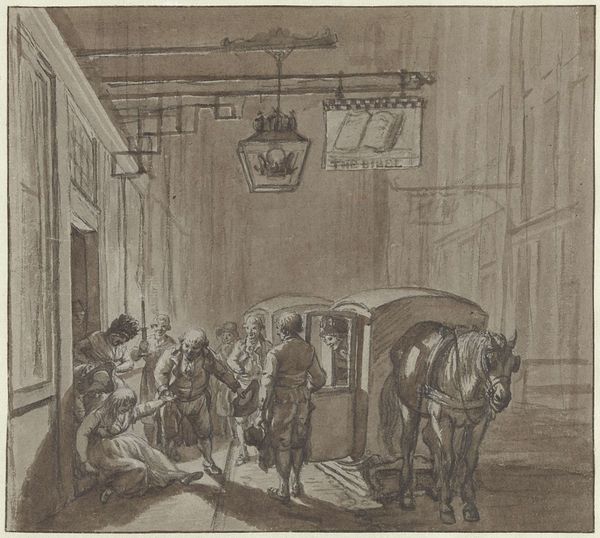
drawing, ink
#
portrait
#
drawing
#
etching
#
figuration
#
ink
#
cityscape
#
genre-painting
#
realism
Copyright: Public Domain: Artvee
Editor: This is Jean-Louis Forain's "Slavery in the North," made sometime between 1914 and 1919 using ink and etching. The sepia tones create this haunting, desolate atmosphere. What strikes me is the stark contrast between the group of working-class figures and the more aloof authority figures, suggesting a real divide. How do you interpret this work within its historical context? Curator: Well, looking at it from a historian’s lens, it seems less a literal depiction of chattel slavery and more a commentary on the economic and social servitude prevalent in industrialized nations during and after World War I. Forain often critiqued social injustices. Do you notice how the figures are dehumanized, almost like cogs in a machine within an urban landscape? Editor: I see that now. They're all facing the same direction, blending into this mass that stretches out into the city. There’s a lack of individuality. The title feels deliberately provocative, drawing a comparison that forces a re-evaluation of freedom. But was the public receptive to such critiques at the time? Curator: It was a period of immense social upheaval. Such pieces served to stoke discussion, reflecting a wider anxiety about class disparity and power dynamics. While some found it challenging, others recognized it as a stark commentary on the post-war reality of many working people. The etching medium itself, accessible and reproducible, mirrors the mass existence portrayed. Editor: It's fascinating how the medium itself can reinforce the message. It gives us so much to consider regarding the socio-political undercurrents of art. I had not initially considered how deeply implicated Forain's style and material were in his social commentary. Curator: Indeed, it reminds us that art's power often lies not just in its immediate aesthetic but also in its ability to engage with and reflect on its own socio-historical moment.
Comments
No comments
Be the first to comment and join the conversation on the ultimate creative platform.

